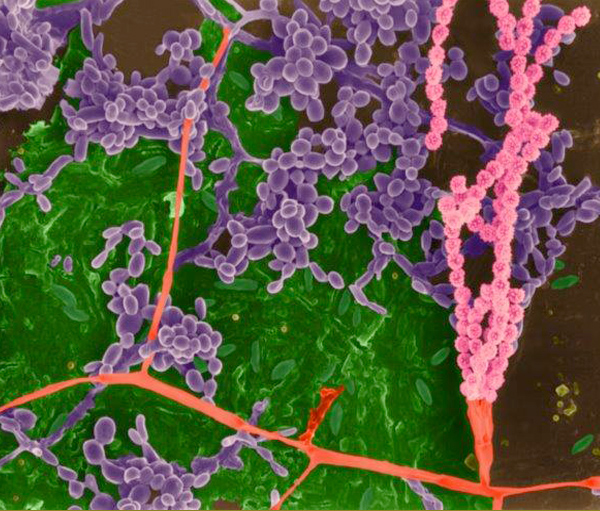
© Dennis Kunkel Microscopy
Salmonella is a genus consisting of many species of gram negative bacteria, most of which are motile, and are present in animal reservoirs and in the environment.
What diseases are caused by Salmonella?
Members of the Salmonella genus cause a variety of diseases such as enteric fever, gastroenteritis, and septicemia. Reactive arthritis involving swelling, pain and inflammation of the joints, is a complication following salmonella enteritidis. Salmonella has also been implicated in cases of osteomyelitis in children with co-existant sickle cell anemia.
What species of Salmonella are known to cause gastrointestinal illness?
The top 4 Salmonella isolates that cause gastrointestinal illness are Salmonella typhimurium, Salmonella enteritidis, Salmonella Heidelberg and Salmonella newport. Other prominent members of the salmonella species that are implicated in gastrointestinal illness are Salmonella javiana, Salmonella poona and Salmonella montevedio.
What food products are commonly associated with Salmonella food poisoning?
Raw meats, poultry, eggs, milk and dairy products, fish, shrimp, frog legs, yeast, coconut, sauces and salad dressing, cake mixes, cream-filled desserts and toppings, dried gelatin, peanut butter, cocoa, and chocolate (from the bad bug book).
Who is more susceptible to infection from Salmonella?
People of all age groups are susceptible to these bacteria; however immunocompromised, elderly and young children are at a higher risk. Patient's who are HIV positive and who have fully developed AIDS suffer from Salmonella infections more frequently. Incubation period The Incubation period for food borne salmonellosis is 12-72 hours.
Epidemiology of salmonella
Salmonella is transmitted to humans via the feco-oral route. An infected individual sheds the bacteria in his feces, and the bacterium is viable for months in the environment in water, soil, and manure.
Diagnosis
Salmonellosis can be diagnosed by isolating and culturing the bacteria from the stool or blood of the infected person.
Treatment
Most people often recover from a bout of salmonellosis without a course of antibiotic treatment. Treatment for such individuals is only supportive, with intravenous or oral fluids, adequate nutrition and rest. Often times when the illness does get complicated a course of broad spectrum antibiotics might be necessary.
Salmonella path chart
View a path chart for Salmonella.
Contact EHA Consulting Group today for more information about how we can assist your company.